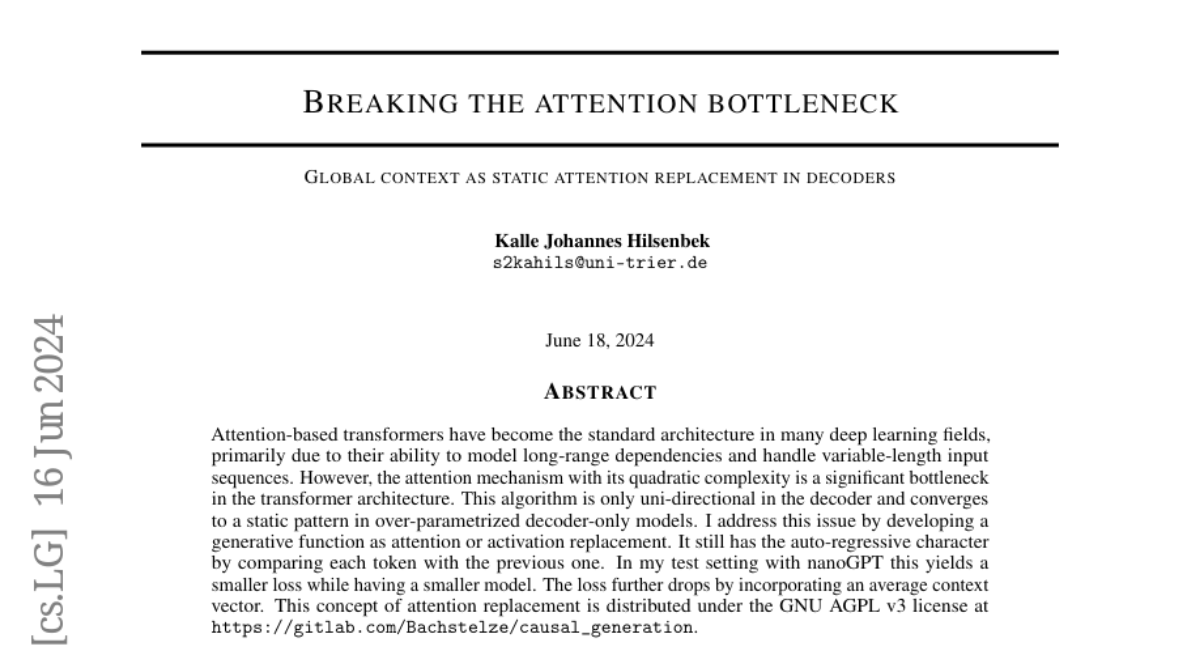Breaking the Attention Bottleneck
Kalle Hilsenbek
2024-06-18

Summary
This paper discusses a new method for improving how attention mechanisms work in transformer models, which are widely used in deep learning. The author proposes a way to replace traditional attention with a more efficient generative function that helps reduce complexity and improve performance.
What's the problem?
Attention mechanisms are crucial for transformers because they help the model understand relationships between words or tokens in a sequence. However, the traditional attention method has a significant drawback: its complexity grows quadratically with the number of tokens, which makes it slow and inefficient, especially for long inputs. This can lead to performance issues and limits the model's ability to process large amounts of data effectively.
What's the solution?
To solve this problem, the author developed a new generative function that serves as a replacement for the standard attention mechanism. This new method still allows the model to compare each token with the previous one, maintaining the auto-regressive nature of the model (where each output depends on prior inputs). In tests using nanoGPT, this approach resulted in lower loss values (indicating better performance) while using a smaller model. Additionally, incorporating an average context vector further improved results.
Why it matters?
This research is important because it addresses a major limitation in transformer models, making them more efficient and capable of handling longer sequences of data. By improving how attention works, this advancement can lead to faster and more effective AI applications in natural language processing, computer vision, and other fields that rely on deep learning models.
Abstract
Attention-based transformers have become the standard architecture in many deep learning fields, primarily due to their ability to model long-range dependencies and handle variable-length input sequences. However, the attention mechanism with its quadratic complexity is a significant bottleneck in the transformer architecture. This algorithm is only uni-directional in the decoder and converges to a static pattern in over-parametrized decoder-only models. I address this issue by developing a generative function as attention or activation replacement. It still has the auto-regressive character by comparing each token with the previous one. In my test setting with nanoGPT this yields a smaller loss while having a smaller model. The loss further drops by incorporating an average context vector. This concept of attention replacement is distributed under the GNU AGPL v3 license at https://gitlab.com/Bachstelze/causal_generation.